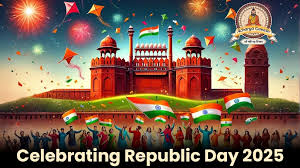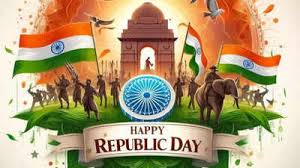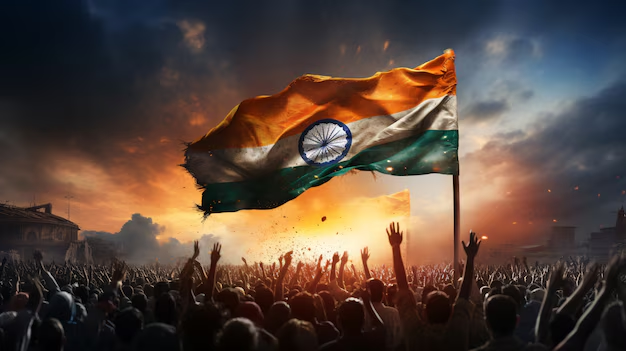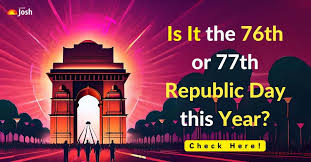Republic Day in India: A Celebration of the Constitution.
India celebrates Republic Day 2025 on January 26th of each year to remember the day in 1950 that the Indian Constitution was adopted, marking the nation’s transition to a republic.
Historical Background.
India became a republic after gaining independence from British rule in 1947, and the Constitution replaced the Government of India Act of 1935 as the country’s governing document. The Constitution was approved by the Indian Constituent Assembly on November 26, 1949, and it went into effect on January 26, 1950, a date chosen to mark the day in 1930 when the Indian National Congress proclaimed Purna Swaraj, or complete independence.

Celebrations Across the Nation.
Republic Day is honored by parades, political speeches, cultural programs, and public and private activities that showcase India’s history, governance, and traditions.
Key Developments.
British India was formally divided into two independent dominions, India and Pakistan, by the UK Parliament’s passage of the Indian Independence Act of 1947. Self-reliance and change: On August 15, 1947, India attained independence following a victorious independence campaign spearheaded by Mahatma Gandhi’s Indian National Congress. On August 29, 1947, a seven-member drafting committee led by Dr. B.R. Ambedkar was formed to create a permanent constitution. On November 26, 1949, the Constitution was approved after much deliberation, and on January 26, 1950, Dr. Rajendra Prasad was sworn in as India’s first president.

Customs and Ceremonies.
Presidential Address: On the eve of Republic Day 2025, the Indian president delivers a speech to the nation.
Flag Hoisting: The president raises the national flag in New Delhi, while the governor and lieutenant governor do the same in each state and union territory.
Main Event in Delhi: As part of the opulent celebrations on Kartavya Path (formerly Rajpath), the President hosts cultural displays and a ceremonial parade. The occasion showcases India’s diversity, military prowess, and cultural heritage, with a range of police and military services participating.
Chief Guest Tradition.
Each year, a foreign head of state or government is invited as the chief guest. The decision reflects India’s strategic, political, and economic ties. For example, French President Emmanuel Macron was the primary guest at the 75th Republic Day celebrations.

Beating Retreat Ceremony.
This event takes place on January 29 to wrap up Republic Day celebrations. Bands from all three branches of the military perform at Vijay Chowk, and the President receives a ceremonial salute. As the ceremony draws to a close, popular songs like “Abide With Me” and “Sare Jahan Se Achha” are played together with the national anthem.
Padma Awards.
To honor outstanding citizen accomplishments, the President bestows the Padma Awards on the eve of Republic Day 2025. These awards, which were first presented in 1954, fall into three categories:
The second-highest civilian award, the Padma Vibhushan, is given for exceptional and deserving service.
The third-highest civilian award, the Padma Bhushan, is given for outstanding service of high order.
The Padma Shri is the fourth-highest civilian honor for outstanding service.
Although recipients receive a medal and a certificate, there are no monetary rewards for being recognized. Details on each award are also included in a commemorative pamphlet.

Republic Day 2025 Parade Highlights.
At the beginning of the procession, the President, who is the Commander-in-Chief of the Indian Armed Forces, is honored.
India’s achievements and diversity are showcased through military contingents, cultural tableaus, and performances.
Republic Day, which celebrates the nation’s history, democratic ideals, and cultural variety, is still a joyous occasion.
Festivities and Observance.
Parades, political speeches, cultural events, and other festivities that showcase India’s history, governance, and customs are all part of the Republic Day celebrations.